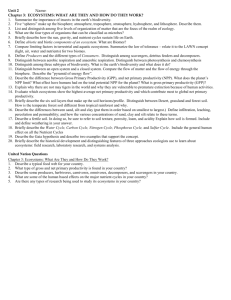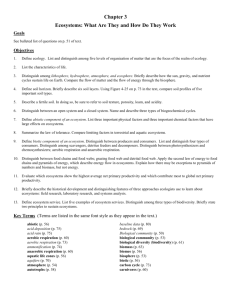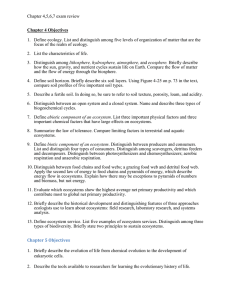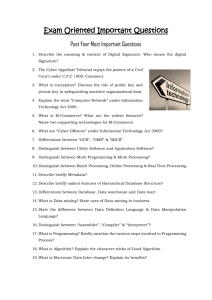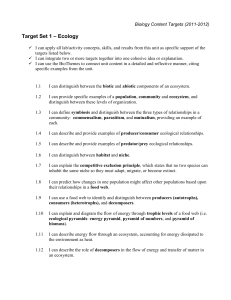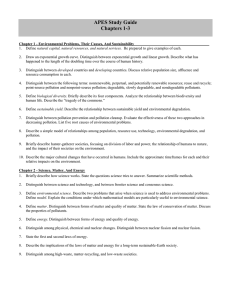CHAPTER 3 STUDY GUIDE
advertisement
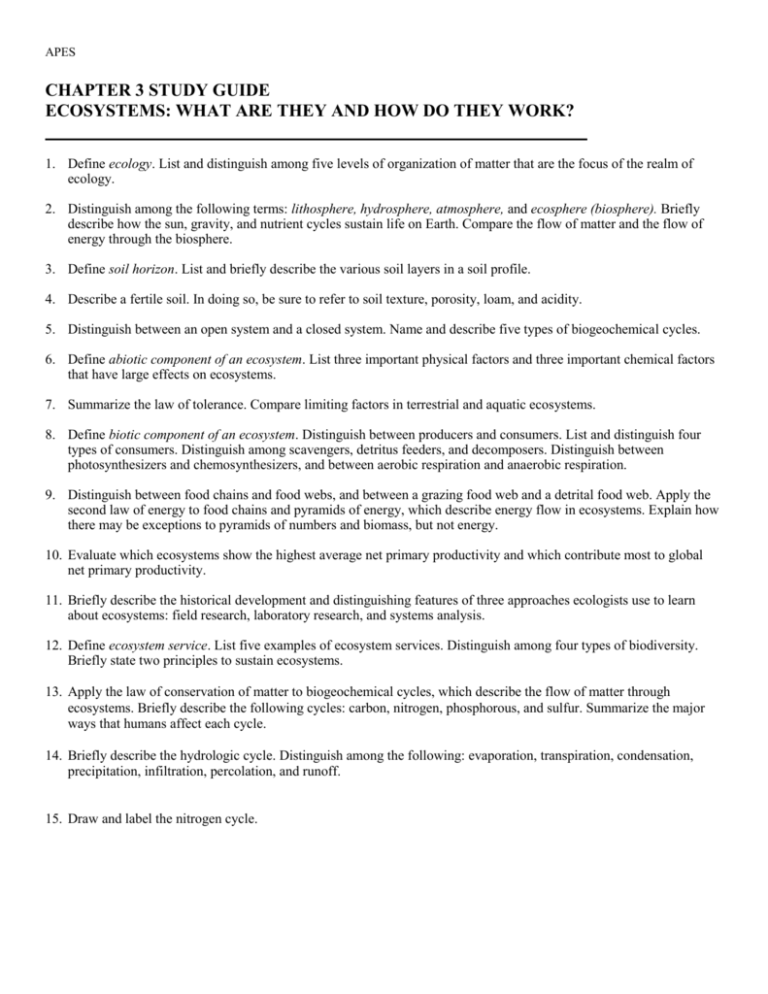
APES CHAPTER 3 STUDY GUIDE ECOSYSTEMS: WHAT ARE THEY AND HOW DO THEY WORK? 1. Define ecology. List and distinguish among five levels of organization of matter that are the focus of the realm of ecology. 2. Distinguish among the following terms: lithosphere, hydrosphere, atmosphere, and ecosphere (biosphere). Briefly describe how the sun, gravity, and nutrient cycles sustain life on Earth. Compare the flow of matter and the flow of energy through the biosphere. 3. Define soil horizon. List and briefly describe the various soil layers in a soil profile. 4. Describe a fertile soil. In doing so, be sure to refer to soil texture, porosity, loam, and acidity. 5. Distinguish between an open system and a closed system. Name and describe five types of biogeochemical cycles. 6. Define abiotic component of an ecosystem. List three important physical factors and three important chemical factors that have large effects on ecosystems. 7. Summarize the law of tolerance. Compare limiting factors in terrestrial and aquatic ecosystems. 8. Define biotic component of an ecosystem. Distinguish between producers and consumers. List and distinguish four types of consumers. Distinguish among scavengers, detritus feeders, and decomposers. Distinguish between photosynthesizers and chemosynthesizers, and between aerobic respiration and anaerobic respiration. 9. Distinguish between food chains and food webs, and between a grazing food web and a detrital food web. Apply the second law of energy to food chains and pyramids of energy, which describe energy flow in ecosystems. Explain how there may be exceptions to pyramids of numbers and biomass, but not energy. 10. Evaluate which ecosystems show the highest average net primary productivity and which contribute most to global net primary productivity. 11. Briefly describe the historical development and distinguishing features of three approaches ecologists use to learn about ecosystems: field research, laboratory research, and systems analysis. 12. Define ecosystem service. List five examples of ecosystem services. Distinguish among four types of biodiversity. Briefly state two principles to sustain ecosystems. 13. Apply the law of conservation of matter to biogeochemical cycles, which describe the flow of matter through ecosystems. Briefly describe the following cycles: carbon, nitrogen, phosphorous, and sulfur. Summarize the major ways that humans affect each cycle. 14. Briefly describe the hydrologic cycle. Distinguish among the following: evaporation, transpiration, condensation, precipitation, infiltration, percolation, and runoff. 15. Draw and label the nitrogen cycle.
